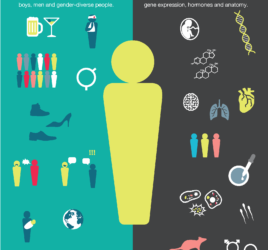
Feigning ADHD and stimulant misuse among BSS students
Media reports and scientific sources confront us with controversial discussions around ADHD (standing for attention-deficit/hyperactivity disorder). Controversial topics include its existence in children and adults, its seemingly unclear diagnostic criteria, and possible occurrence of over-diagnosis. The discussions are fed by rising numbers of ADHD diagnoses in several settings – including the university campus! Although we can say for sure it’s not ONE but MANY factors that contribute to an increased number of ADHD diagnoses, we also consider the possibility that some people may have reasons to intentionally over-report, exaggerate, or even produce symptoms (referred to as malingering).
Several external incentives may motivate university students to feign ADHD. One such incentive is to obtain and (mis)use medication that is usually prescribed for the treatment of ADHD: Stimulants.
How is it with our BSS students?
With several of my colleagues I share a particular interest in the issue of feigning cognitive disorders, with a particular interest in assessing the credibility of clients at the clinical assessment of ADHD. In various courses and projects, ranging from the second year practical to Master and PhD projects, we discuss and (empirically) explore topics around feigning cognitive disorders. For years, I have been inspired by the openness of our students in this discussion, their active involvement and engagement, and willingness to share their own experiences. So instead of basing my opinion on anecdotes and personal impressions that I could share here at this point, I believed we should better make a systematic approach to learn about our students’ opinions and experiences on feigning ADHD and stimulant misuse.
Over the last years, we performed a large-scaled survey on > 1000 of our BSS students.
The vast majority we recruited from the first year, as we wanted to collect their opinions and experiences BEFORE they enter one or several of our courses and practicals in which we discuss this topic from a professional perspective.
What do BSS students think of feigning ADHD?
In our survey, we learned that more than half of our students believed feigning ADHD has advantages (52%) and that it is easy to deceive a clinician at a professional assessment (57%).
Also, about 17% of our students knew someone who feigns ADHD. The presumed advantages were in the academic context, such as allowance of different forms of exams, receiving extra time for assignments and exams, getting an own room for taking exams, or access to stimulant medication. Interestingly to us and confirming my own experiences in the discussions with students with and without ADHD, more than a third (39%) also assumed benefits in the social context, such as receiving attention from others, being pitied, having an excuse for impulsive behavior or attentional lapses, getting more social support, privileges, or not taking responsibility for their own behavior.
The fact that a substantial number of students perceive benefits from an ADHD diagnosis in the social context may indicate a low perceived stigma associated with ADHD among BSS students.
Among BSS students, the diagnosis of ADHD is seemingly not seen as a label that sets individuals apart and may result in depreciation. Instead, the label ADHD brings about sympathy and the possibility of obtaining stimulant medication.
Why do BSS students take stimulants? Or why not?
Regarding the misuse of stimulants, we learned that the majority of our students (68%) believe stimulants are also beneficial for people not diagnosed with ADHD.
About 16% reported to have taken stimulants at least once without a prescription, and most of these students (80%) obtained the medication from peers.
The motives for taking stimulants concerned for more than half of the respondents leisure activities (e.g., to party) and the academic context (e.g., to increase concentration and focus when preparing for an exam). The most common motives for not taking stimulants regarded no perceived need and concerns with health issues (e.g., addictive character, harmful physical and psychological consequences, damaging to own body, etc.). Ethical concerns (e.g., not fair to others, responsibility towards society, intention to show good and honest behavior) were only raised by a minority (< 20%).
What is the impact of simulated ADHD?
Feigning ADHD and the unjustified allocation of resources damages the public’s opinion about ADHD, and may hamper adequate treatment for those people who genuinely struggle with ADHD and justifiably need professional support.
This claim is not new, but becomes increasingly relevant. The recent 20-year update of the Slick criteria for the assessment of malingering (Sherman, Slick, & Iverson, 2020) stressed specifically the substantial external incentives that may motivate people to feign ADHD, as well as the high rates (up to 50%) of noncredibility at clinical evaluation of ADHD in the university setting.
Our survey underscores the need to perform the diagnostic evaluation of ADHD among university students with caution. A careful exploration of the credibility of their symptoms is warranted, in order to provide optimal treatment for those who are in real need. My colleagues and I are proud to take part and make a contribution to this development. In cooperation with several clinical units we are working hard to develop new and improve existing assessment tools that support the clinician in the assessment of ADHD (e.g., Becke et al., 2019; Fuermaier et al., 2017a, 2017b). To prevent misunderstanding of my post: There is no doubt that some people intentionally feign ADHD. Yet, this does by far not mean that every single case of noncredible symptom presentation is evidence for feigning; a fallacy which is frequently committed by professionals and researchers alike!
Attention please!
My colleagues and I believe that the high rates of stimulant misuse among students is alarming and needs attention. Off-label use without monitoring by a professional can have bad consequences, and may result in serious health issues for misusers. Feigning ADHD is not as easy as you think, and it violates ethics of being a professional behavioral scientist.
If you are interested to learn about our study and this topic, then I recommend having a look at our article presenting this study. It is open access and freely available for everyone: Fuermaier, A.B.M., Tucha, O., Koerts, J., Tucha, L., Thome, J., & Faltraco, F. (2021). Feigning ADHD and stimulant misuse among Dutch university students. Journal of Neural Transmission, https://doi.org/10.1007/s00702-020-02296-7
References
Becke, M., Fuermaier, A.B.M., Buehren, J., Weisbrod, M., Aschenbrenner, S., Tucha, O., & Tucha, L. (2019). Utility of the Structured Interview of Reported Symptoms (SIRS-2) in detecting feigned adult attention-deficit/hyperactivity disorder. Journal of Clinical and Experimental Neuropsychology, 41(8), 786-802.
Fuermaier, A.B.M., Tucha, O., Koerts, J., Butzbach, M., Weisbrod, M., Aschenbrenner, S., & Tucha, L (2017a). Susceptibility of impairment scales to noncredible responses in the clinical evaluation of adult ADHD. The Clinical Neuropsychologist, 32(4), 671-680.
Fuermaier, A.B.M., Tucha, O., Koerts, J., Lange, K.W., Weisbrod, M., Aschenbrenner, S., & Tucha, L. (2017b). Noncredible cognitive performance at clinical evaluation of adult ADHD: An embedded validity indicator in a visuospatial working memory test. Psychological Assessment, 29(12), 1466-1479
Fuermaier, A.B.M., Tucha, O., Koerts, J., Tucha, L., Thome, J., & Faltraco, F. (2021). Feigning ADHD and stimulant misuse among Dutch university students. Journal of Neural Transmission, https://doi.org/10.1007/s00702-020-02296-7
Sherman, E.M.S., Slick, D.J., & Iverson, G.L. (2020). Multidimensional malingering criteria for neuropsychological assessment: A 20-year update of the malingered neuropsychological dysfunction criteria. Archives of Clinical Neuropsychology, 35(6), 735-764.
Picture credits
Picture from flickr.com by Marco Verch used by all creative commons license.



